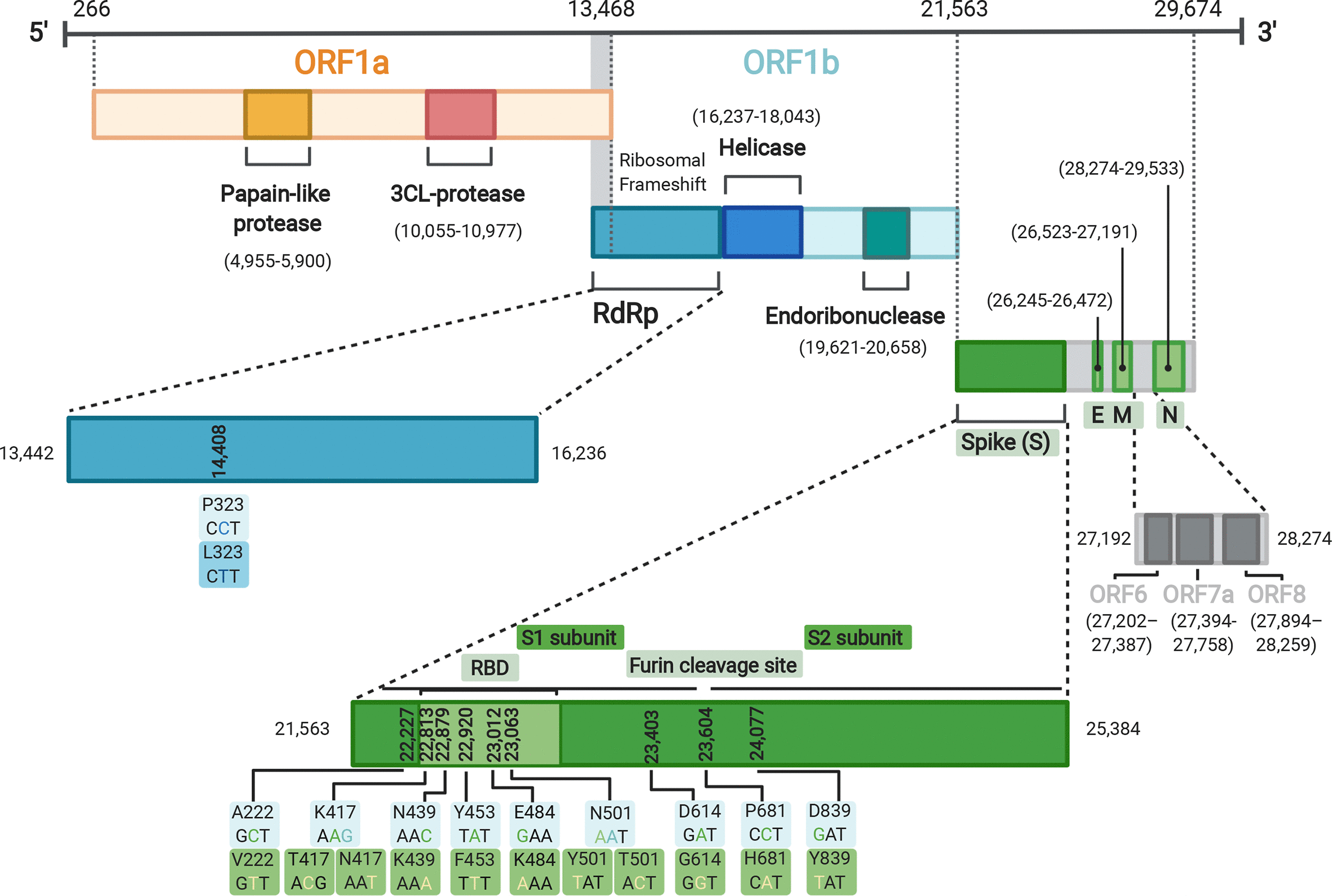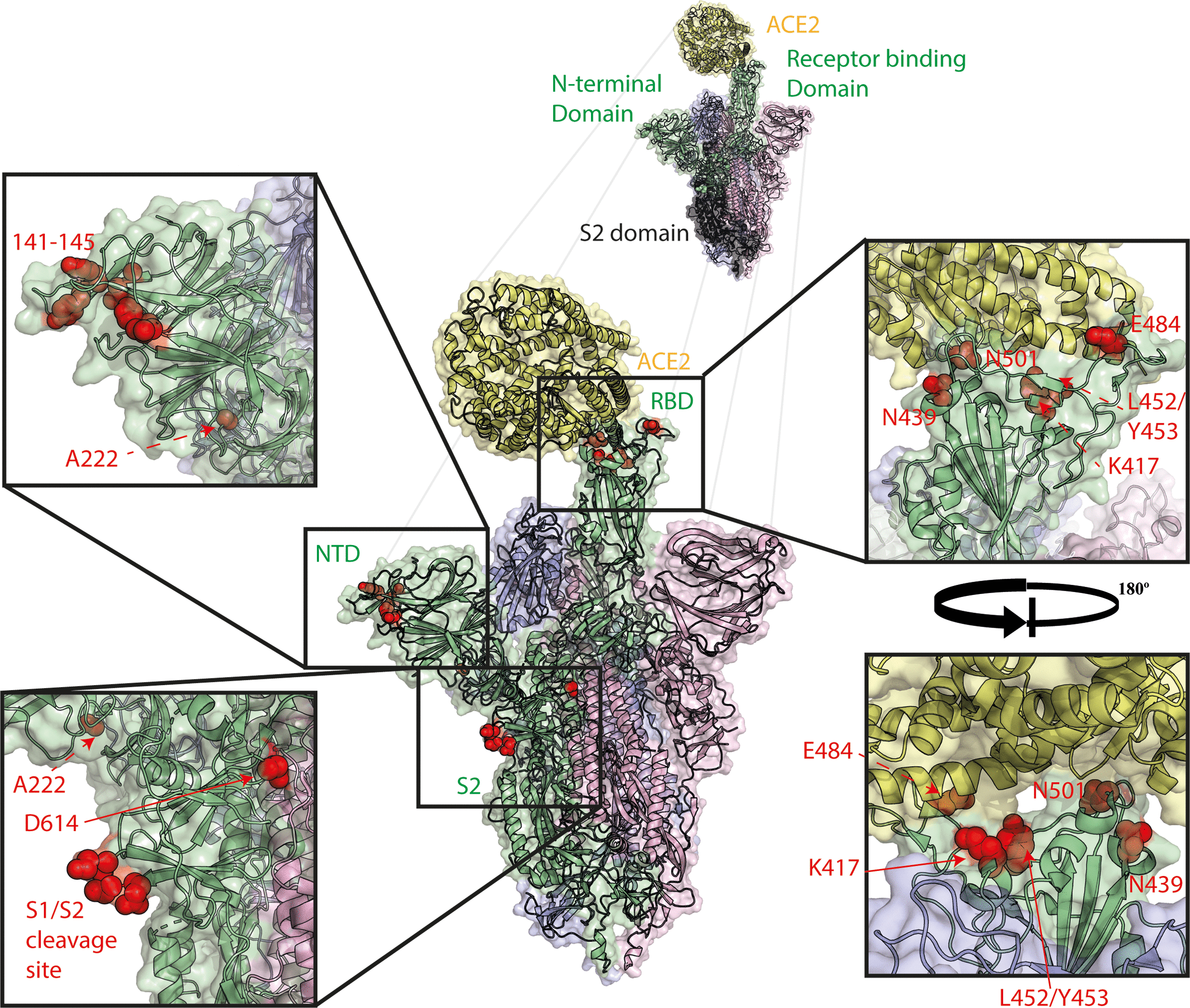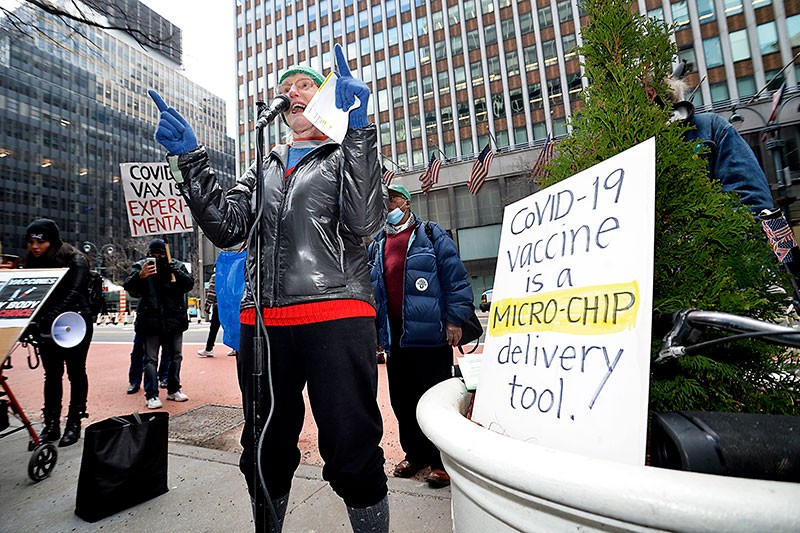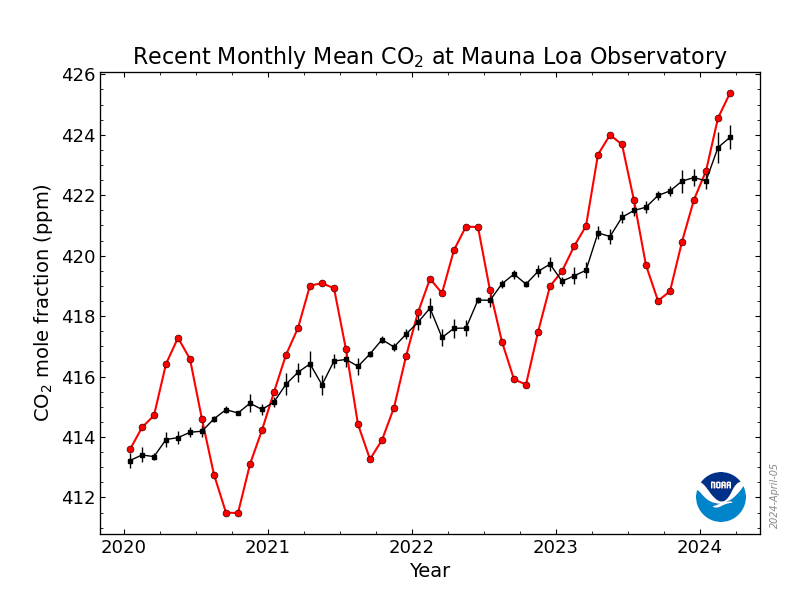NNadir
NNadir's JournalSARS-CoV- 2 one year on: evidence for ongoing viral adaptation
The review paper I'll briefly discuss in this post is this one:
SARS-CoV- 2 one year on: evidence for ongoing viral adaptation (Thomas P. Peacock, Rebekah Penrice-Randal2, Julian A. Hiscox, Wendy S. Barclay, Journal of General Virology 2021;102:001584)
It's really not necessary for me to go to deeply into it; especially for people with a modicum of scientific training. Like all Covid-19 papers it's open sourced. It has a very nice description of the mutations that are on going. I will though say a few things by way of explanation, particularly for those portions that might be misinterpreted so as to result in panic, for example the remarks made about E484K, the substitution of a glutamic acid residue by lysine.
I don't think that most people are truly aware of how marvelous the RNA vaccines, specifically the Moderna vaccine, for which I've had both doses, and the Pfizer vaccine, for which my sons have each had a first dose, really are. This technology, having been scaled rapidly to industrial production, and should be available indefinitely to save lives with new vaccine variants to address viral variants, should build confidence, not fear. In this case Science has come through, big time.
If one does not have a routine familiarity of the one letter amino acid code abbreviations, they can be found on the Wikipedia page, along with the structures of the amino acids: Wikipedia Proteinogenic Amino acids A mutant is usually described by the original residue, the number, reading from the amino terminus to the final carboxlic acid terminus, and the new amino acid following, as above E484K.
This review has a wonderful and detailed description of all the major variants. These are nicely summarized graphicly near the paper's outset.
Genome organisation of SARS-CoV-2 with regions of interest annotated. Mutations of interest (for example those found in B.1.1.7) shown as both nucleotide and amino acid changes. Figure made using Biorender (https://biorender.com/).

The mutants are shown in both their three letter codon forms. For example on the extreme lower left hand corner of the diagram, the substitution in the spike protein, the RNA triad that codes for A (alanine), GCT - guanidine-cytosine-thymidine (written in the reverse transcribed DNA form, rather than the RNA form that takes place in the virus) - is replaced by GTT, which codes for V (Valine).
Some brief excerpts from the text:
The introduction begins with the usual recap of what SARS-CoV-2 and then has this brief description of its genome:
The exoribonuclease, which is kind of a error checking transcription feature, was something of which I was unaware. (I'm hardly a virologist.) This is actually a good feature, since it slows the mutation rate of the virus somewhat, but at the cost of keeping the viral particles functional. HIV, for example lacks this feature, and although many viruses produced are non-functional, many are viable, pathogenic and resistant to developed treatments, such as protease inhibitors. "NSP" refers to "non-structural proteins" that is proteins on the business end of viral replication.
There is a nice description of the process of viral replication:
"SgmRNA" here refers to "subgenomic messenger RNA," which allows for the transcription of a single sequence of messenger RNA to several different proteins by skipping over some regions of the code, allowing for efficiency for the code.
Here's a picture of the spike protein, showing several of the important major mutants as well as the target ACE2 protein to which the virus binds:
Spike mutations of interest mapped to the spike trimer. Mutations shown in red, ACE2 shown in yellow, spike monomer in RBD ‘up’ conformation shown in green, spike monomers in RBD ‘down’ conformation shown in pink and blue. Structure made using PyMOL using PDBID 7A94 [24].

"RBD" refers to "receptor binding domain." Shown in this region, in red, is the location E484K mutation in this region, which confers increased virulence of the strain. The "NTD" region, "N-terminal domain" is the region to which antibodies, including those generated by the vaccines, bind. The distance between these regions is a good thing, explaining why increasingly contagious and virulent strains, whose infectivity is a function of the receptor binding domain, do not necessarily incur resistance to antibodies.
By the way, for people who run around questioning whether the virus was a "lab accident," I suggest reading the section on ferrets and mink, Y453F, the tyrosine to phenylalanine mutation, to show that these viruses can and do jump species.
Even though the antibodies bind to the NTD region and not the RBD region, there is some concern about the effect of the E484K mutant on the total effectiveness of the vaccine; this may be a function of kinetics more than anything else - mere speculation on my part - but, if this were the case, the vaccine would still greatly reduce the virulence, and much data suggests as much.
Each of the major known mutants is given an overview in the full paper, which as discussed is open sourced. The "scary" part about
E484K - which should not be too scary - is briefly excerpted here:
Whether these concerns are valid is not entirely clear. Here for reference is a paper suggesting that these concerns may be inflated:
Neutralization of SARS-CoV-2 spike 69/70 deletion, E484K and N501Y variants by BNT162b2 vaccine-elicited sera (Xie, X., Liu, Y., Liu, J. et al. Nat Med 27, 620–621 (2021))
Be safe, be well, be vaccinated.
Have a nice Sunday.
Ternary Phase Diagram of the Neptunium/Plutonium/Americium System at 1300K

Alloying behaviour among U, Np, Pu and Am predicted with the Brewer valence bond model (Ogawa, Journal of Alloys and Compounds, Volume 194, Issue 1, 13 April 1993, Pages 1-7)
Somehow, I'm anxious tonight and can't sleep, so I thought I'd contemplate this phase diagram, which represents to me is a perfect way of getting rid of large numbers of nuclear weapons while simultaneously saving humanity from itself.
A little strange thing to ponder, I know, but that's where I am tonight hoping to dream of a better world. We could do so much better than we are doing.
The Unknown Dissident.
The race to curb the spread of COVID anti-vax propaganda using 2020 election techniques...
This is from Nature News, probably open sourced: The race to curb the spread of COVID vaccine disinformation,
Subtitle:
Researchers are applying strategies honed during the 2020 US presidential election to track anti-vax propaganda.
Some excerpts:
The battle is also being fought in computer-science and sociology labs across the United States, where scientists who track the spread of false information on social media honed their skills during the US presidential election last year. They are now shifting focus, from false claims that the election was ‘stolen’ to untruths about COVID-19 vaccines. Some surveys suggest that more than one-fifth of people in the United States are opposed to receiving a vaccine.
The epic battle against coronavirus misinformation and conspiracy theories
Researchers are launching projects to track and tag vaccine misinformation and disinformation on social media, as well as collecting massive amounts of data to understand the ways in which misinformation, political rhetoric and public policies all interact to influence vaccine uptake across the United States.
Scientists have identified a wide variety of disinformation surrounding COVID-19 and vaccines, ranging from conspiracy theories that the pandemic was engineered to control society or boost hospital profits, through to claims that the vaccines are risky and unnecessary.
One research consortium, dubbed the Virality Project, is expanding on strategies pioneered during the election to help inform how platforms such as Twitter and Facebook tackle vaccine disinformation. Created by researchers at multiple US institutions — including Stanford University in California, the University of Washington in Seattle and New York University — the team is working with public-health agencies and social-media companies to identify, track and report disinformation that violates their rules...
It does seem like a part of our population has gone insane. It's an interesting, albeit scary question, how and why this happened.
Pic from the article:

So the two week virtual American Chemical Society meeting is over. I'm just filled with joy.
It's not joy that it's over, but joy in that I lived to see it, without even leaving my office, or in the evening, home.
I learned so much. It was so rich, so many subjects.
It featured, by zoom, a diverse group of scientists from all over the world, from Asia, to Africa, to Europe, South America, and of course, North America, working together, at home, far from home, brilliant people, women, men, young, old, middle aged, ...especially the young people, fabulous science, lasting, on East Coast time, late into the night.
...especially the young people...
...especially them...
...they are going to be a great generation, and they fill me with hope; they are so sharp, so wonderful, so liberating, so free...
I feel really bad for the young 5th year grad student whose presentation just crashed.
You could see how nervous she was, how hard she worked to put it all together, but she struggled with Powerpoint, and got just so far - English not being her first language and then the whole thing crashed.
The talk, if you got through all that was quite interesting, involving novel phosphoamidites and novel protecting groups for DNA synthesis, but it all just crashed...
She probably spent a long time preparing, and then this...
I hope she has a great career though, she's a smart kid doing good work.
New Weekly Record Set at the Mauna Loa Observatory for CO2 Concentrations: 419.28 ppm.
As I've indicated several times I somewhat obsessively keep a spreadsheet of the weekly data at the Mauna Loa Carbon Dioxide Observatory, which I use to do calculations to record the dying of our atmosphere, a triumph of fear, dogma and ignorance that did not have to be, but nonetheless is.
This week's reading is the first in the history of weekly average readings, going back, to 1975 posted by the Mauna Loa is the highest ever recorded at the Mauna Loa carbon dioxide observatory, 419.28 ppm.
Generally, each year, these measurements peak in May or early June. I expect we will see 420 ppm, possibly more this year - the figure in the title is a weekly average but a daily reading this week exceeded 421 ppm - less than 10 years after we first saw 400 ppm.

The figures for this past week:
Up-to-date weekly average CO2 at Mauna Loa
Week beginning on April 4, 2021: 419.28 ppm
Weekly value from 1 year ago: 416.64 ppm
Weekly value from 10 years ago: 393.00 ppm
Last updated: April 11, 202
The increase in carbon dioxide concentrations when compared to the same week in 2020 is "only" 2.64 ppm. (If one keeps track as I do, there is a fair amount of statistical noise in these measurements, but the trends are consistent.) The highest weekly increase over 2020 this year, 2021, was 3.90 ppm, observed in the week beginning February 28, 2021.
In my spreadsheet, I keep records of the increases over 10 year periods, in this case, a comparison of the reading this past week, with the last week of May in 2011. Using Excel functions, I can sort them by values high to low and do a lot of other things. The value for the 10 year increase is the highest ever recorded, 26.28 ppm.
The 12 month running average for increases over a ten year period, week to week, 2021 to 2011, is 24.27 ppm, 2.43 ppm per year.
If any of this troubles you, don't worry, be happy. You can always head over to the E&E forum and read that "renewable energy is growing 'exponentially.'" I've been hearing that, of course, my whole damned life and I'm not young, but again, don't worry, be happy.
But with respect to the most recent data point at the Mauna Loa observatory, so much for Bill McKibben's "350.org." Bill is another one of those putative "environmentalists" who has trouble mouthing the word "nuclear." He certainly wouldn't want to offend anyone by saying that word. Bill, of course, is a journalist, not a scientist. The job of journalist is to pay selective attention. Many of his supporters say things like: "Nuclear is 'too expensive,'" and "Nuclear is 'too dangerous,'" even while 18,000 to 19,000 people die every damned day - more than have died worldwide on Covid's worst day - from air pollution, precisely because we don't embrace nuclear energy.
By contrast, climate change is apparently not "too expensive." Climate change is also apparently not "too dangerous."
As for "too expensive:"
The earliest nuclear plant ever built in the Western World produced electricity for half a century. It was built on 1940's and early 1950's technology. Modern nuclear plants are designed to last 60 years or more. After they are amortized they are cash cows, they produce electricity only requiring trivial low fuel costs and maintenance costs.
By contrast, every damned piece of so called "renewable energy" on this planet will need replacement in 25 years or less - a few wind turbines, very few, as reported at the comprehensive Master Register of Wind Turbines from the Energy Agency of that off shore oil and gas drilling hellhole, Denmark, lasted 30 years; almost all of them were landfill in 25 years or less, with an average lifetime of under 20 years. Wind turbines will be greasy rotting hulks requiring diesel trucks to haul the blades to landfills before most babies born in 2021 graduate from college. Pretty much every damned solar cell now on this planet will all be more already intractable electronic waste in 25 years.
Nuclear energy is too expensive for whom? Certainly not for future generations, who might use nuclear plants, infrastructure, we build and for which we pay today, but we certainly don't give a rat's ass about their lives. When it comes to providing for them, we couldn't care less. We all turn into Ayn Rand when discussing nuclear energy; we only care for ourselves and those babies born today will have to deal with the shit we leave behind on a planet choking to death on dangerous fossil fuel waste, leaking fracking fields, destroyed ground water, abandoned depleted mines dug so we could be "green," all of the world's best ores completely depleted, hundreds of millions more tons of electronic waste, including spent solar cells, rotting and rusting wind farms, etc.
We couldn't care less.
History will not forgive us; nor should it.
I trust you are having a pleasant and safe Sunday.
My youngest son has a vaccine appointment!
I've been real worried about him; it's his first semester of graduate school. (He just turned 22.)
There are lots of frat nuts in his school; when we visiting last week, some of them burst out a nearby house, drinking, cheering, no masks.
My son assures me that these guys were not engineers.
Anyway, they had a few surges at the University, but this morning his girlfriend got her shot - J&J - and he has an appointment on Wednesday for a Pfizer shot.
My oldest, at 26, has had his first Pfizer, and is due for his second next Monday.
My wife and I are well past our two Modernas!
Thank you President Biden!
The 2nd worst year to year increase in CO2 concentrations over any March in 61 years was March 2021.
Here is the Mauna Loa CO2 observatory's data for the month of March 2012, Monthly Average Mauna Loa CO2
(Accessed April 10, 2021.)
March 2021: 417.64 ppm
March 2020: 414.74 ppm
Last updated: April 7, 2021
I keep a sortable spreadsheet of the monthly data found here: Trends in Atmospheric Carbon Dioxide
Monthly data is available going back 61 years. The increase measured over 2020 is 3.14 ppm. It is the second worst March ever recorded, after March of 2016, when the increase was 3.31 ppm over March of 2015.
If any of this troubles you, don't worry, be happy. We've spent nearly three trillion dollars on solar and wind since 2004. It didn't work to address climate change, isn't working to address climate change, and won't work to address climate change, but it's not practical results that count, but the good intentions, the dream and the fantasy that count.
As for nuclear energy, which was calculated in 2013 by James Hansen and a colleague to have prevented the release of around 31 billion tons of carbon dioxide, this while being vilified by people who know very little about science and engineering, don't worry, be happy. Head on over to the E&E forum where you can hear that it's "too expensive" and "too dangerous."
Prevented Mortality and Greenhouse Gas Emissions from Historical and Projected Nuclear Power (Pushker A. Kharecha* and James E. Hansen Environ. Sci. Technol., 2013, 47 (9), pp 4889–4895)
By the way, nobody knows what to do with dangerous fossil fuel waste. It's just dumped, indiscriminately, at a rate of roughly 95 million to 100 million tons per day. We couldn't care less. Not even counting climate change, dangerous fossil fuel waste kills between six and seven million people a year, around 18,000 to 19,000 people a day, more than Covid-19 ever killed on its worst day.
Here is the most recent full report from the Global Burden of Disease Report, a survey of all causes of death and disability from environmental and lifestyle risks: Global, regional, and national comparative risk assessment of 79 behavioural, environmental and occupational, and metabolic risks or clusters of risks, 1990–2015: a systematic analysis for the Global Burden of Disease Study 2015 (Lancet 2016; 388: 1659–724) One can easily locate in this open sourced document compiled by an international consortium of medical and scientific professionals how many people die from causes related to air pollution, particulates, ozone, etc.
Climate change, according to what I hear, unlike nuclear energy, is decidedly not "too dangerous" nor, apparently, is it "too expensive."
Go figure.
In 2011, in coastal Japan, around 20,000 people were killed by seawater. We couldn't care less about them, but we hear all the time about nuclear reactors destroyed in the same event. How many people died from radiation again?
Go figure.
Have a pleasant Saturday evening.
Profile Information
Gender: MaleCurrent location: New Jersey
Member since: 2002
Number of posts: 33,558